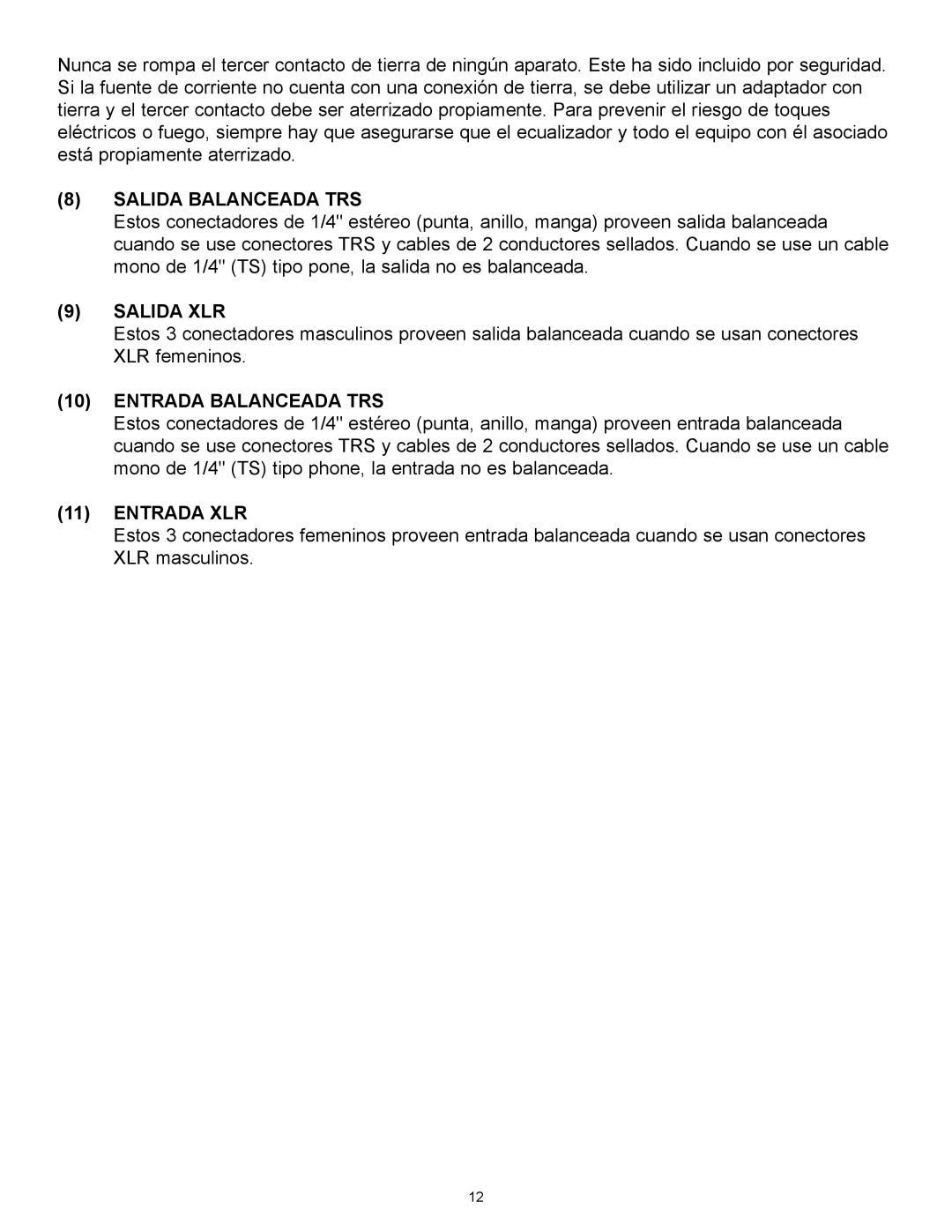Q215B, QF131, QF215 specifications
Peavey, a renowned name in the audio equipment industry, has consistently provided high-quality professional audio gear. Among its product offerings, the Peavey QF131, QF215, and Q215B stand out as versatile equalizers that cater to the needs of audio engineers and musicians alike. These units are designed to enhance sound quality and provide precise audio control.The Peavey QF131 is a dual-channel 31-band graphic equalizer known for its robust construction and reliability. It provides users with 31 frequency bands per channel, allowing for detailed and precise adjustments in various environments. One notable feature of the QF131 is its low-noise operation, which ensures that audio signals remain clean and free from unwanted interference. It also includes a bypass switch for seamless transitions between processed and unprocessed signals, making it a favorite among live sound engineers.
The QF215, on the other hand, is a dual-channel 15-band graphic equalizer, which is ideal for those who require a more streamlined equalization process. This model features a simplified interface that remains powerful enough for professional applications. It provides adjustable gain control, which allows users to boost or cut frequencies based on their specific sound needs. The QF215’s low-cut filter and high-pass filter options further enhance its flexibility, making it suitable for various audio applications, from live performances to studio recordings.
Complementing these models, the Q215B offers similar features with the added advantage of Peavey’s patented Switchable 20 Hz low-cut filter. This innovative technology is particularly useful for eliminating sub-bass frequencies that can muddy mixes. The Q215B also boasts excellent headroom, making it suitable for high-output scenarios without distorting the audio signal.
All three models share Peavey's commitment to high-quality audio processing. They incorporate durable controls and switchable input/output configurations, ensuring seamless integration into existing audio setups. With rugged metal housing, these equalizers are built to withstand the rigors of touring and frequent use, further enhancing their appeal for professional and semi-professional users.
In summary, the Peavey QF131, QF215, and Q215B are exemplary graphic equalizers that meet the rigorous demands of modern audio applications. Their extensive features, coupled with Peavey’s reliable technology, make them ideal choices for anyone seeking to enhance their sound system's performance and clarity.
